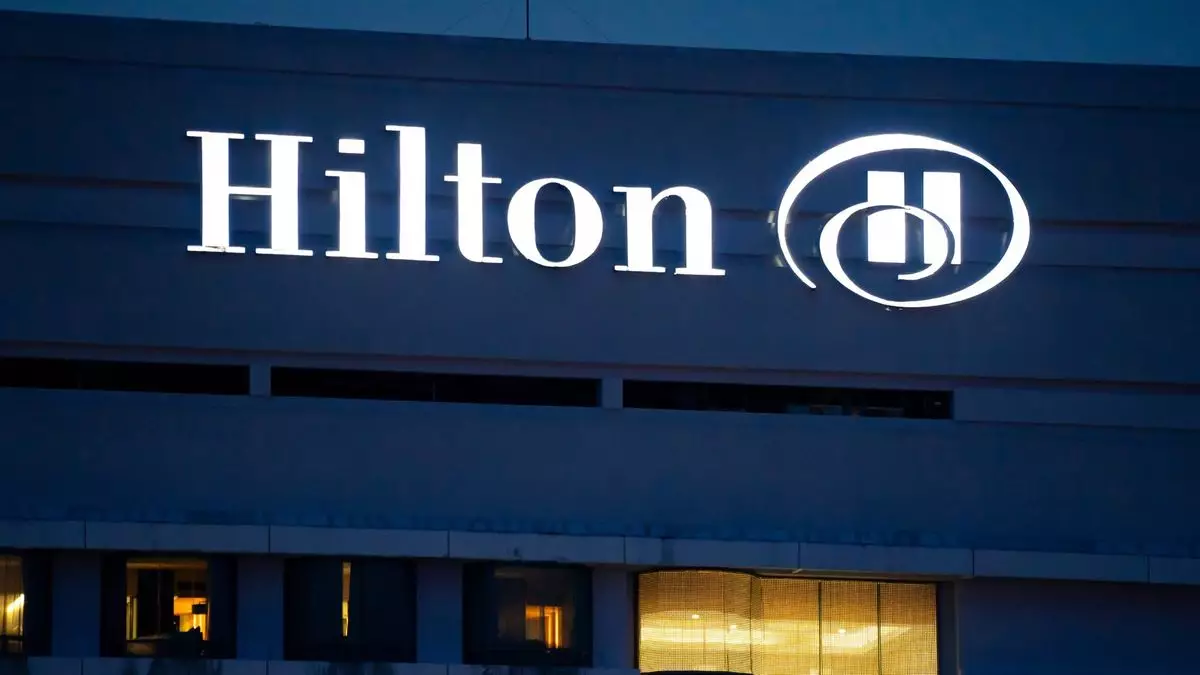During Hilton’s recent Q4 earnings call, the company’s CEO, Christopher Nassetta, conveyed a significant level of optimism regarding the economic environment under current U.S. presidential policies. Nassetta mentioned that Hilton’s outlook for 2025 has improved compared to previous projections, highlighting that the company feels „incrementally a bit better“ than it did earlier in the year. This sentiment is a crucial indicator for investors and stakeholders, as it underscores the importance of economic policies on corporate performance and consumer spending.
Despite the ongoing turbulence surrounding Donald Trump’s presidency, which includes various political and economic uncertainties, Nassetta believes that longer-term growth prospects are looking favorable. His remarks suggest that the business community, including Hilton, is starting to see beyond the immediate chaos into a landscape with potentially beneficial economic conditions. This optimism is largely rooted in expectations of an easing regulatory environment and favorable tax reforms.
Factors Contributing to the Positive Outlook
Nassetta identified several key factors contributing to this optimistic viewpoint. One major element is the anticipated revival of tax policies from Trump’s previous administration, which included substantial tax cuts. He mentioned that there is widespread optimism among businesses about these potential changes, which could positively influence corporate investment and spending.
Additionally, the conversation touched upon tariffs and trade negotiations as significant variables in the current economic climate. With recent implementations of tariffs on Chinese products, Nassetta acknowledged the complexity of these relationships but remained hopeful that the administration’s approach is aimed at securing a solid trade deal without further burdening businesses with high tariffs. His assertion that Hilton has proactively diversified its supply chains over the past five years reduces the company’s vulnerability to tariffs—a strategy that may well pay off in times of economic disruption.
Financial Performance Indicators
Hilton’s financial results from the fourth quarter further bolstered this optimistic outlook. The company reported revenue of $2.78 billion, marking a 6.5% increase from the same period in the previous year. This growth trajectory was complemented by a net income of $505 million for the fourth quarter and $1.54 billion for the entire year, exceeding initial forecasts. Such performance metrics are indicative of a company that not only withstands market fluctuations but is also positioned to capitalize on future growth opportunities.
Furthermore, other key performance indicators, like a 1.1 percentage point increase in fourth-quarter occupancy rates and a 1.9% rise in average daily rates, paint a picture of a resilient hospitality business aligned with broader positive economic signals. The revenue per available room (RevPAR) also saw an upward trend, rising by 3.5%, which is crucial for assessing profitability in the hotel industry.
Hilton’s Q4 earnings call illustrates a blend of confidence and strategic navigation through an unpredictable economic landscape. While uncertainties persist under the current presidential administration, the company’s proactive measures and signs of increased revenue posit Hilton favorably for the upcoming years. It’s a delicate balance between optimism and caution, but with a strong financial foundation and a diverse operational strategy, Hilton appears well-prepared to embrace future opportunities despite potential challenges.


Napsat komentář